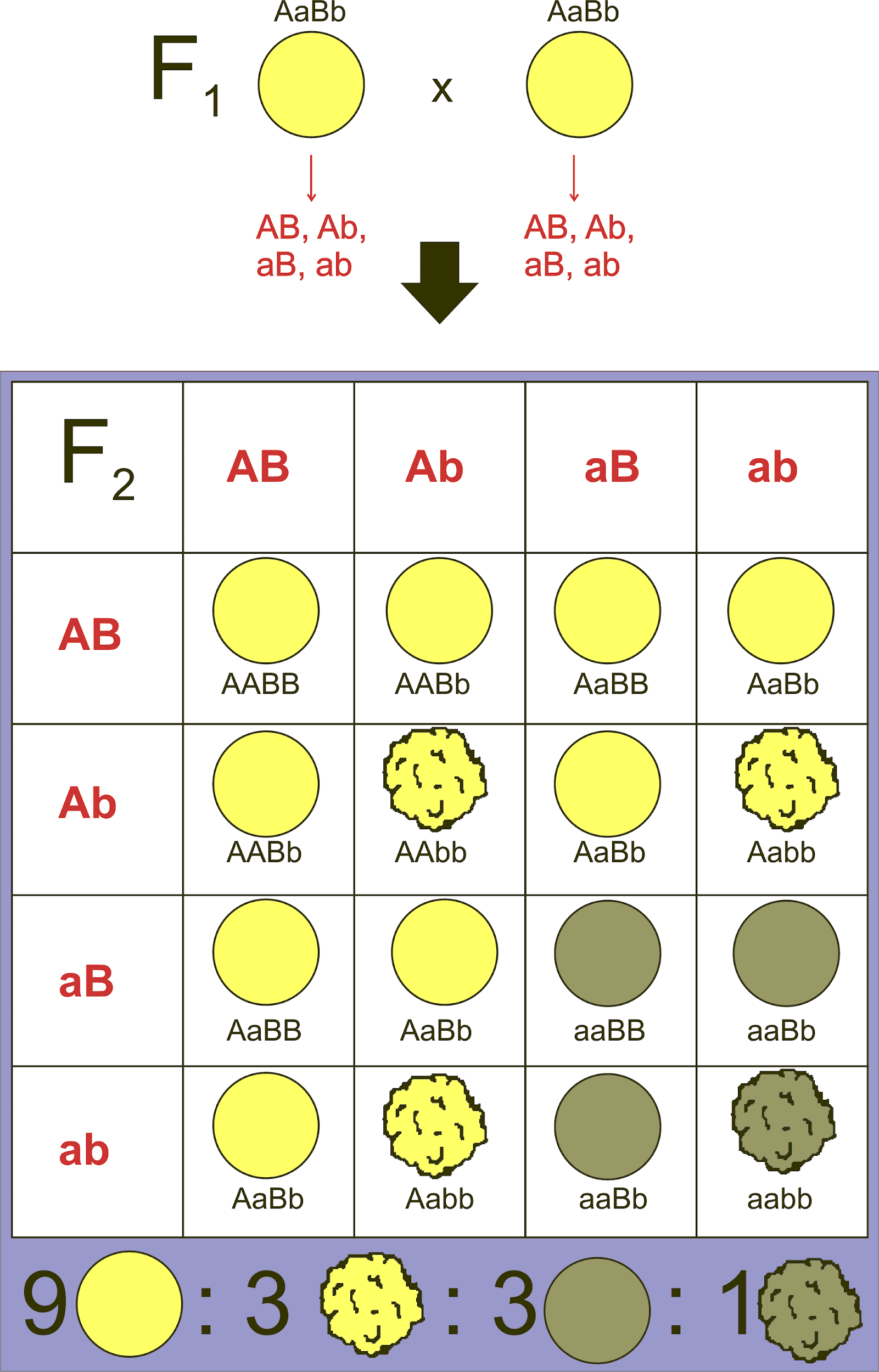
What did Mendel's dihybrid cross prove?
Answer
386.7k+ views
1 likes
Hint: In 1865, Gregor Mendel performed dihybrid crosses on pea plants and found the Property of Independent Assortment, a key law of genetics. Mendel discovered that the pairings of qualities in the parental generation sorted separately from one another from one generation to the next as a result of his experiment.
Complete answer:
The independent assortment law.
It was obvious from the genotypic ratio that each gene was inherited separately from the others.
However, he was fortunate in that the genes he analysed were not linked. If they did, the law would no longer be valid. Morgan's work on fruit flies showed that recombinant progeny possessed more parental genes than recombinant progeny.
The Law of Independent Assortment by Mendel
We've only followed the expression of one gene thus far. Mendel also carried out crosses to track the segregation of two genes. His second law, the law of independent assortment, was discovered as a result of these investigations. To begin, a few terminologies are defined.
A cross between two parents who differ by two pairs of alleles is known as a dihybrid cross (AABB x aabb)
An individual who is heterozygous for two pairs of alleles is called a dihybrid (AaBb)
A dihybrid cross, once again, is not a cross of two dihybrids. Let's have a look at a dihybrid cross performed by Mendel.
Yellow Round Seed x Green Wrinkled Seed Parental Cross
The F1 Generation is characterised by its all-yellow, spherical appearance.
9 Yellow, Round, 3 Yellow, Wrinkled, 3 Green, Round, 1 Green, Wrinkled, F2 Generation

The law of independent assortment is Mendel's second law, which states that the segregation of alleles from one allelic pair during gamete production is independent of the segregation of alleles from another allelic pair.
Mendel used a backcross - F1 dihybrid x recessive parent - to confirm the results of his second law, just as he did with the monohybrid crosses.
Note:
The Law of Independent Assortment asserts that an assortment of each pair of traits is independent of the other during a dihybrid cross (crossing of two pairs of traits). In other words, one pair of features segregates from another pair of traits independently during gamete development.
Complete answer:
The independent assortment law.
It was obvious from the genotypic ratio that each gene was inherited separately from the others.
However, he was fortunate in that the genes he analysed were not linked. If they did, the law would no longer be valid. Morgan's work on fruit flies showed that recombinant progeny possessed more parental genes than recombinant progeny.
The Law of Independent Assortment by Mendel
We've only followed the expression of one gene thus far. Mendel also carried out crosses to track the segregation of two genes. His second law, the law of independent assortment, was discovered as a result of these investigations. To begin, a few terminologies are defined.
A cross between two parents who differ by two pairs of alleles is known as a dihybrid cross (AABB x aabb)
An individual who is heterozygous for two pairs of alleles is called a dihybrid (AaBb)
A dihybrid cross, once again, is not a cross of two dihybrids. Let's have a look at a dihybrid cross performed by Mendel.
Yellow Round Seed x Green Wrinkled Seed Parental Cross
The F1 Generation is characterised by its all-yellow, spherical appearance.
9 Yellow, Round, 3 Yellow, Wrinkled, 3 Green, Round, 1 Green, Wrinkled, F2 Generation

The law of independent assortment is Mendel's second law, which states that the segregation of alleles from one allelic pair during gamete production is independent of the segregation of alleles from another allelic pair.
Mendel used a backcross - F1 dihybrid x recessive parent - to confirm the results of his second law, just as he did with the monohybrid crosses.
Note:
The Law of Independent Assortment asserts that an assortment of each pair of traits is independent of the other during a dihybrid cross (crossing of two pairs of traits). In other words, one pair of features segregates from another pair of traits independently during gamete development.
Recently Updated Pages
Master Class 9 General Knowledge: Engaging Questions & Answers for Success

Master Class 9 English: Engaging Questions & Answers for Success

Master Class 9 Science: Engaging Questions & Answers for Success

Master Class 9 Social Science: Engaging Questions & Answers for Success

Master Class 9 Maths: Engaging Questions & Answers for Success

Class 9 Question and Answer - Your Ultimate Solutions Guide

Trending doubts
Give 10 examples of unisexual and bisexual flowers

Draw a labelled sketch of the human eye class 12 physics CBSE

Differentiate between homogeneous and heterogeneous class 12 chemistry CBSE

Differentiate between insitu conservation and exsitu class 12 biology CBSE

What are the major means of transport Explain each class 12 social science CBSE

Draw a diagram of a flower and name the parts class 12 biology ICSE




